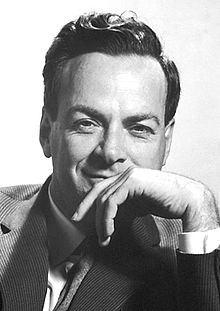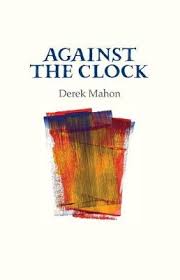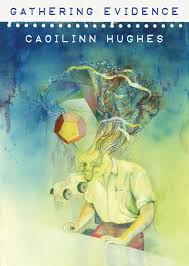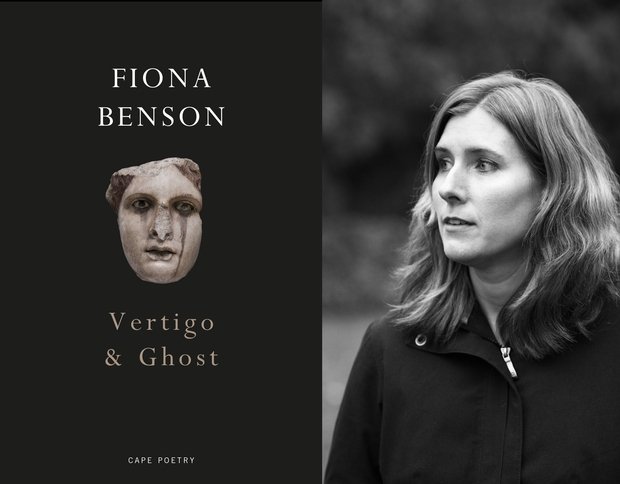
Richard Feynman (physicist, Nobel laureate, Manhattan project member, and raconteur) once issued a striking challenge to artists of all kinds, and poets in particular. He expressed this challenge better than I can paraphrase so I shall quote him at some length, ‘
Poets say science takes away from the beauty of the stars – mere globs of gas atoms. Nothing is “mere”… do I [as a scientist] see less or more? The vastness of the heavens stretches my imagination – stuck on this carousel my little eye can catch one-million-year-old-light… What men are poets who can speak of Jupiter if he were like a man, but if he is an immense spinning sphere of methane and ammonia must be silent?’
-Feynamn, R., Six Easy Pieces: The fundamentals of physics explained, ( London, 1998), pp 59 – 60
Feynman’s frustration was borne, at least in part, from personal experience. He was close friends with California based artist Jirayr Zorthian. Jerry, as Feynman called him, used to enjoy teasing Feynman by claiming that science could never match the beauty of art.[1]
Feynman’s frustration may seem to rest upon an erroneously hard distinction between scientists and artists, and science and art for that matter, but does touch upon a something I’ve noticed recently. There is very little poetry that celebrates science. I don’t mean that there is no poetry that celebrates nature, or the stars at night, or that there aren’t verses about the technological fruits of science, such as the healing properties of contemporary medicine. It Poetry about the specifics of science that I see much less often;about the interactions of atoms, the life-cycle of stars, the long messy dance of evolution.. Feynman is right to see something odd in poetry’s willingness to celebrate outdated abstractions of nature, as opposed to the more grounded understanding the world that science offers today.

As it happens, I have recently come across two poets who I think meet Feynamn’s challenge in a rather elegant way. The first of these is Derek Mahon. His recent collection, Against the Clock, contains many poems appreciating nature; the turn of the seasons, the lives of animals, the aesthetic destructive events.
Mahon goes beyond these poetic commonplaces by engaging with scientific knowledge, and celebrating the beauty of this knowledge. In ‘Ebb tide’, Mahon combines a walk along the beach with an understanding of ecology to produce a quite lovely image of the shore as a place of creation and potential; ‘
Ah yes, but this is where new life begins,
that ‘inter-tidal zone’ where the sun warms
vast cloud reflections on a moist expanse
beneath the sky’
(Against the Clock, p 33)
Mahon’s knowledge of the microbial, tidal and ecological symphony at play on the beach does not distract him from the beach’s beauty, rather it gives him a deeper appreciation of it. He is able to see and engage with the unseen world of potential that our eyes often miss, but scientific knowledge reveals.
Not all of Mahon’s scientific poetry is celebratory, much of it is polemical. He is angry at the destruction and debasement of the natural world, in particular by the pointlessness and arrogance that he detects in anthropic climate change. His poem, ‘The Rain Forest’ is a blow against the presumption of so many humans to re-make and destroy nature. Mahon’s anger is tinged with the science of climate change, and his images of desecration reflect the dark predictions of much contemporary climate science. Here he wraps up a grimly prophetic poem by imagining a totally deforested earth, ‘
What would we do, deprived
of these, what would the whole chain
of being be without their active sustenance?
No Owls or Foxes, only high finance
in a world of depleted oxygen
where once we used to live.’
(Ibid, p 50)

The potential range of scientific poetry is, for me, best embodied by Caolinn Hughes in her debut collection, Gathering Evidence. Her poetic voice is an inquiring one, and her verse is always investigating something. Gathering Evidence features two poems dedicated to the life and ideas of the 17th century cosmologist Johannes Kepler. ‘God Always geometrises’ sets out the nature of Kepler’s achievement with clarity and brevity, ‘
He was the first to stare at the stars and really dream
of travelling. He gauged the radii between earths
and suns by careful estimation, deduction, thirst
of acumen. Mars was not a Hallowed warning but an axiom.’
(Gathering Evidence, p 54 )
When Hughes assumes Kepler’s own voice in, ‘Harmony of the Spheres’, she shows a talent for historical ventriloquism, ‘
Heaven knows the planets are not silent in their orbits.
They sound of swallows making cyclical migrations;
returning blue-feathered, quavering melancholic airs.’
(Ibid, p 55).
In her lyric poetry too, the focus of Hughes verse is always on the topic at hand, on an abstraction or an idea that has piqued her interest. The speakers in such poems, whether Hughes or another character, are rarely named, and form elements of an argument, pieces of a puzzle that the poem is solving. One such puzzle piece is the nameless, ‘lover’ in ‘Somatic Cells’ who the speaker references in passing, as she investigates the metaphorical connections between the antipodes, somatic cells, and sex.
What other poet would dedicate two poems to Kepler? But in Hughes’ poetry, science and art effortlessly intermingle. The personal and the experimental are addressed simultaneously in, ‘King of the Castle’. Here, Enrico Fermi frets about equations over Lunch while he prepares the world’s first stable fission reaction; ‘
… Mushrooms. Broccoli.
Meat Stew. He ate in moderation, then digested slowly: in his gut
he knew it was the hydrogen atoms in the wood that slowed the neutrons.
The math would follow. Okay, he told himself calmly. O.K
(Ibid, p 18)
Distinct layers of meaning and expression are contained within; lyrical emotion, interpersonal niceties, wartime politics, espionage, and of course, nuclear physics. Hughes’ scientific poetry is the inverse of Dr Johnson’s famous dismissal of the metaphysical poets. Nature and art are indeed ransacked for images, but there is no violence in how such very separate ideas are yoked together. In Hughes writing there is no distinction between scientific and literary modes of inquiry. Indeed, the metaphysical poets, who loved new ideas, and described anew old ones, share the same poetic spirit as Hughes; inquiring, adventurous and bold.
These two poets have meet Feynman’s challenge; by celebrating a decidedly scientific vision of nature, they are poets worthy of the postmodern world. Mahon and Hughes are alive to the timeless concerns of the poetic, to love and loss, to change and renewal, to the personal and the exterior. They sacrifice none of this by engaging sensitively, perceptively and assuredly with a scientific vision of the world.
[1] A fuller account of this good-natured dispute is given in Feynman, R., Surely you’re joking Mr. Feynman!: Adventures of a curious character, (London 1992), pp 260 – 278



Leave a comment